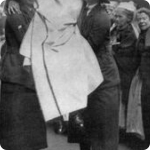Hosted by the Humanities Center and faculty fellow, Bridget Keown. Respondents include Alexander Tough (Hispanic Languages and Literatures) & Susan Grayzel (History, Utah State University). This event will be hybrid, so you can attend it either in person in 602 CL or via Zoom as you prefer.
The “shell-shocked soldier” remains one of the most enduring images of the First World War, and often serves as a symbol for the anguish of combatant soldiers across time and space. Even now, scholars and writers liken “shell shock” with “Post-Traumatic Stress Disorder (PTSD)”, often describing them as the same condition with different names and political meaning (Vance & Howell, 2020). While there is value in noting that war has always harmed those it touches, this lack of specificity also deters analysis into the construction of “shell shock” during the First World War, and the biases that continue to inform trauma research and diagnoses to the present day. My paper argues that, in professional discourse around “shell shock”, both doctors and military officials focused on combatant men, and relied on pre-war theories of gendered behavior, emotions, and self-control to define their condition, only developing new tactics and theories where necessary for victory. As a result, many groups of people, including women, did not receive consideration as patients. I analyze medical journals, conference reports, and popular media of the First World War, showing how doctors justified their choices in constructing “shell shock,” and discussing the implications such choices would have on those who were excluded, specifically women. I argue that the limits of “shell shock,” as a diagnosis and as a symbol, continue to inhibit discussions of war trauma in the past and the present.

